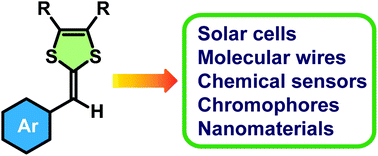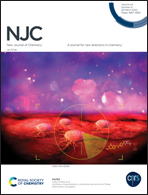Recent advances in dithiafulvenyl-functionalized organic conjugated materials
Abstract
Tetrathiafulvalene (TTF) has been one of the most well-studied heterocyclic compounds since the discovery of the electrical conductivity of its charge-transfer complexes in the early 1970s. As the half unit of TTF, 1,4-dithiafulvene (DTF) presents an excellent organic electron donor and hence has been widely utilized as a functional molecular building block in the design of advanced organic electronic and optoelectronic materials. In the early years of DTF chemistry, research efforts were mainly focused on the development of π-extended TTFs as well as related donor/acceptor (D/A) functionalized π-conjugated systems. Meanwhile, studies dealing with the redox-activity and reactivity of DTF have also progressed significantly over the past few decades. With the growing understanding of the fundamental properties of DTF, the past ten years have witnessed significant advances in the development of DTF-based organic π-conjugated materials and related optoelectronic devices with novel properties and enhanced performances. This review is aimed at reviewing the new chemical properties and reactivities of DTF disclosed in the recent literature as well as highlighting the molecular design, synthesis, and application of state-of-the-art DTF-containing organic π-conjugated materials.

- This article is part of the themed collection: 2020 Focus and Perspective articles


 Please wait while we load your content...
Please wait while we load your content...